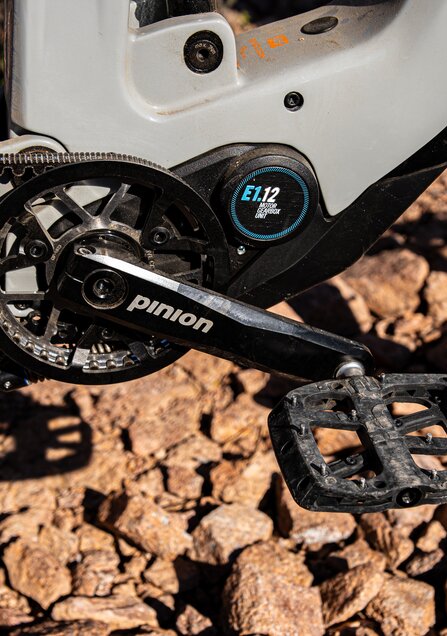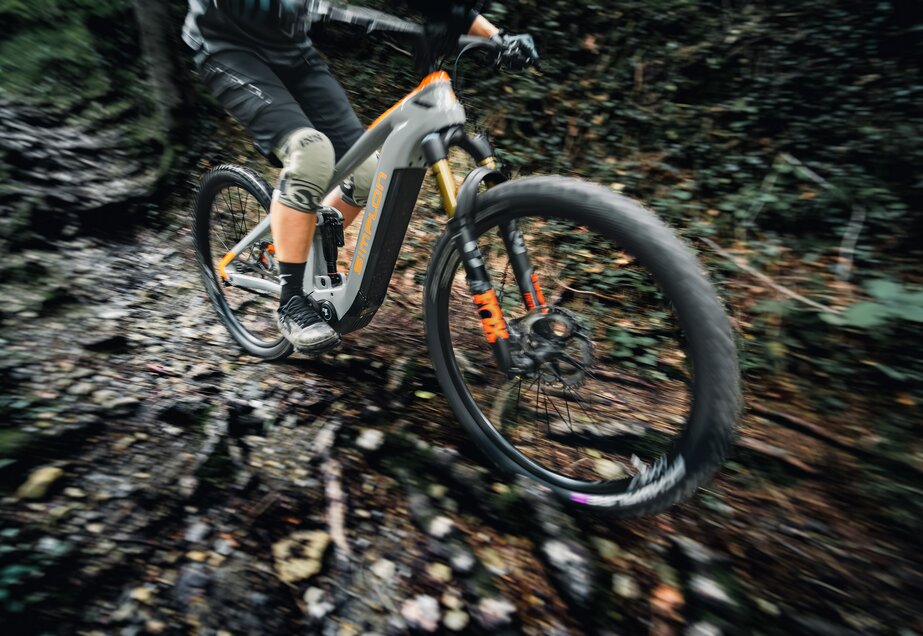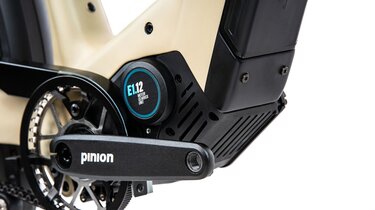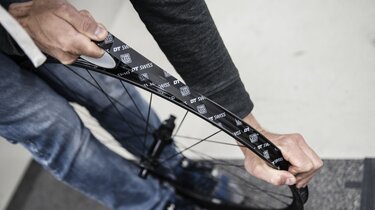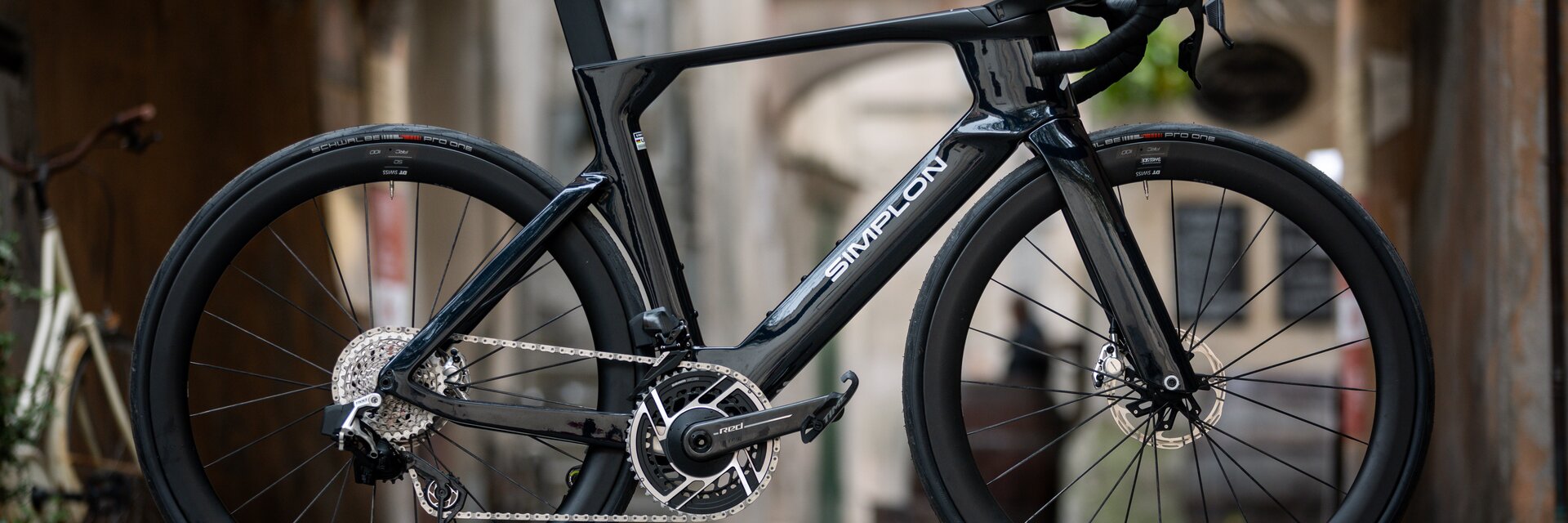

Electronic vs. mechanical groupsets
Mechanical, electronic or integrated gearbox – we show you the differences, advantages and disadvantages of the various shifting technologies used by SIMPLON.
Electronic vs. mechanical shifting – from road bike to e-MTB
Whether it’s a road bike, gravel bike or e-mountain bike: your choice of drivetrain has a major impact on performance, ride feel and maintenance. The question is no longer just “Shimano or SRAM?” but also: “Electronic shifting or an integrated gearbox like Pinion?”
In this article, you’ll learn:
- The key differences between electronic and mechanical shifting systems
- Which solutions SIMPLON currently uses on road bikes, gravel bikes and e-MTBs
- Where electronic systems offer the biggest advantages – and where mechanical drivetrains shine
What is a groupset – and how does it differ on an e-bike?
On traditional bikes (e.g. road bikes) a “groupset” includes all components for shifting and braking: shift levers, brakes, crankset, chainrings, cassette, chain, rear derailleur and front derailleur. Shimano and SRAM supply these as a perfectly matched package.
On e-bikes, things can look different:
- With Shimano or SRAM, you still get the usual combination of drivetrain and brakes – the motor is a separate system.
- With Pinion E-Drive, the electronic gearbox is integrated directly into the motor unit – brakes come from another manufacturer (e.g. Magura).
In general: the higher the quality of the drivetrain, the more precise and faster the gear changes, the longer the components last – and often the lighter the overall weight. Electronic systems add extra features such as app connectivity, customisable shifting logic and often reduced maintenance.
How do mechanical, electronic and integrated shifting systems work?
Mechanical shifting
Still widely used on MTBs and trekking bikes – but on road bikes now mostly limited to the entry-level segment – is mechanical shifting. It works via thin Bowden cables that connect the shift levers to the front derailleur (up front) and rear derailleur (at the back).
When you operate the shift lever, the cable is shortened or lengthened by a set amount. This moves the front derailleur to shift the chain onto a different chainring, or the rear derailleur to shift it onto a different sprocket.
On SIMPLON bikes, cables are often fully routed inside the frame – protecting them from dirt and giving the bike a clean look.
Electronic shifting
Here, electrical signals replace Bowden cables. Nowadays, the shift signal is transmitted wirelessly at both SRAM and Shimano. Only one cable remains in Shimano systems: it runs from the rear derailleur through the chainstay to the front derailleur, supplying both components with power from the central battery and also serving to charge the entire system. Small electric motors precisely move the chain – or, in the case of belt drives, the gearbox components.
Power comes from integrated batteries – depending on the system, either one per derailleur or a central battery for the whole setup. Advantages include no cable wear, precise shifting even under load, and often customisable settings via an app.
Integrated gearbox shifting (e.g. Pinion E-Drive)
On some e-MTBs and trekking bikes, the shifting mechanism is built directly into the motor housing – as with the Pinion E-Drive. This electronically controlled, sealed multi-speed gearbox is often paired with a low-maintenance belt drive.
Shifting is done at the push of a button, even while stationary. Bowden cables and external derailleurs are eliminated entirely – the system is protected from dirt, impacts and stone chips.
SIMPLON covers the full spectrum – three models as examples of each shifting type
At SIMPLON, you’ll find the right bike for every type of drivetrain. Three current models show just how versatile the technology can be:
- Mechanical shifting – KIARO Core 105
A versatile endurance road bike equipped with proven mechanical groups such as Shimano 105. Ideal for riders who value direct control and classic technology. - Electronic shifting – PAVO Di2/AXS
A high-performance road bike available with Shimano Di2 or SRAM eTap AXS. For precise, fast gear changes and a clean cockpit with no visible cables. - Integrated gearbox – RAPCON :ePinion
An e-MTB where motor and gearbox are combined in the Pinion E-Drive (MGU). Low-maintenance, robust and optionally with a belt drive – perfect for demanding trails and tough conditions.
What are the advantages and disadvantages of mechanical shifting?
Mechanical drivetrains still have their strengths: they’re straightforward, lightweight, and usually more affordable than electronic systems. For those who ride a lot, appreciate robust technology, and want to keep an eye on their budget, this option is often the right choice – whether on a road bike, gravel bike, mountain bike, or trekking bike.
Advantages
A major plus is the weight: without a battery, motor, or extra wiring, a mechanical drivetrain is generally lighter than an electronic system. This saves energy on long climbs and provides a more direct ride feel.
In terms of cost, mechanical systems are usually well below electronic solutions – both at purchase and when it comes to spare parts or repairs. Thanks to their simple, easy-to-understand design, issues can often be fixed quickly, sometimes even on the go. Spare parts such as cables, housings, or cogs are available almost everywhere – a big advantage on bike trips or tours far from major cities.
Disadvantages
Shifts on mechanical systems are often a bit stiffer and less precise than with electronic setups. Shift cables also wear over time, requiring regular maintenance. In heavy dirt or wet conditions, shifting performance can deteriorate more quickly than with a sealed, electronically controlled system.
Even so, mechanical shifting remains a proven, versatile choice for riders who prefer simple technology and value ease of repair.
What are the advantages and disadvantages of electronic shifting?
Electronic drivetrains are on-trend – and not just for road bikes. Gravel bikes, e-mountain bikes, and trekking bikes also benefit from their precise, comfortable technology. Whether it’s Shimano Di2, SRAM eTap AXS, or an integrated gearbox like the Pinion E-Drive, gear changes happen at the push of a button or via wireless signal – fast, quiet, and reliable.
Advantages
A key benefit is the high shifting comfort. Just a light tap is enough to change gears – with no effort required. This is especially pleasant on long rides, climbs, or when your hands are tired. Many systems allow shifting from different handlebar positions, adding both comfort and safety.
When it comes to precision, electronic systems clearly have the edge. A small motor ensures the chain or gearbox is always perfectly aligned – no manual fine-tuning needed. Even under heavy load, such as during climbs or sprints, gear changes remain smooth and quick. With integrated gearboxes like Pinion, the mechanism is also protected from dirt, rock strikes, and weather – and can even be shifted while stationary.
Aesthetics also benefit: visible shift cables are eliminated, with wiring routed internally or gone entirely on wireless systems like SRAM AXS. This results in a clean look and reduces maintenance, as there are no cables to wear out or seize up.
Disadvantages
Electronic systems are more expensive to buy than mechanical ones and are usually slightly heavier. They also depend on a battery, which must be charged regularly. In practice, however, a single charge often lasts for many thousands of shifts, and most systems make it easy to check the battery level.
Shifting systems at SIMPLON – an overview of Shimano, SRAM and Pinion
At SIMPLON, two main types of shifting technology are used: classic groupsets from Shimano and SRAM, as well as integrated gearbox systems from Pinion. Both solutions have their own strengths and areas of application.
Shimano offers a wide range of mechanical and electronic groups for road, gravel and mountain bikes. From the high-end Dura-Ace Di2 for professional racing, to the versatile Ultegra Di2, all the way to the more budget-friendly 105 – all are known for precision, durability and a refined shifting feel.
SRAM focuses heavily on its wireless eTap AXS groups in the high-end segment. The Red AXS is one of the lightest complete groupsets on the market, while the Force AXS delivers nearly the same technology at a lower price point. The intuitive operation and clean, cable-free look are trademarks of the AXS series.
Pinion takes a different approach: the entire transmission is housed in a sealed gearbox unit, combined with a motor. Shifting is electronic at the push of a button – even when stationary – and can optionally be paired with a low-maintenance belt drive. This solution is especially robust and resistant to dirt, rock impacts and harsh weather. SIMPLON currently uses this technology on the RAPCON :ePinion (e-MTB) as well as the KAGU :ePinion High and KAGU :ePinion Mid (trekking bikes).
Curious? Check out the bike overview, choose your category, and see in the configurator which shifting systems are available – from high-performance electronic road setups to rugged Pinion gearboxes.


